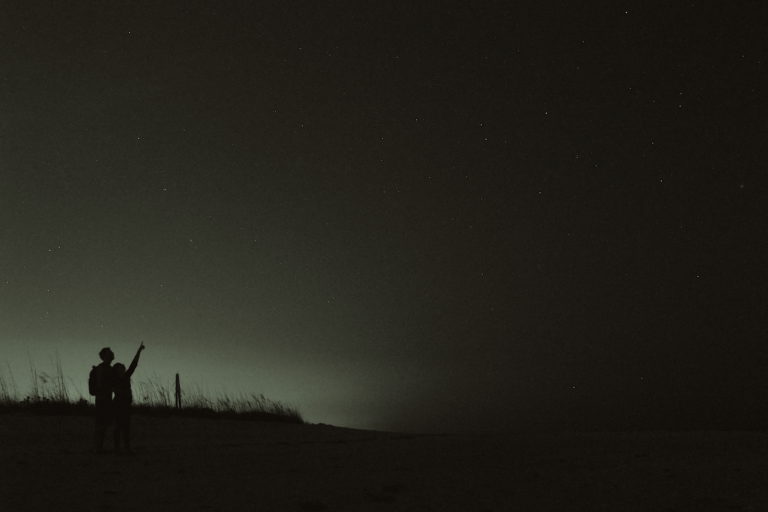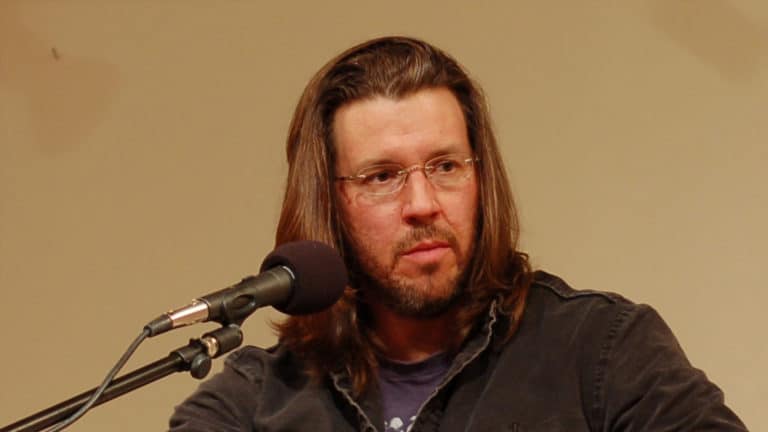Quiet: Though this term may be used to refer to luxurious writing, it’s often used today as a criticism. A novel deemed quiet may center on one character’s internal journey, or there may be relatively little going on in the story from a plot perspective. Quiet novels typically lack solid hooks and are rarely considered high concept.—Lynne Griffin, “Literary Lingo Explained,” in the August 2010 issue of The Writer.
I learned these dispiriting lessons about “quiet” fiction nearly a decade before reading The Writer‘s literary lingo list last summer. My education began back in 2001, when a literary agent began circulating my first book-length fiction manuscript, a World War II-focused novel titled The Haguenauer Line.
Soon enough, rejections accumulated. Sometimes, editorial remarks that the manuscript was “too quiet and small” to be able to publish successfully accompanied these “passes.” In one case, an editor suggested further that The Haguenauer Line suffered not only from being too “quiet,” but also from its close resemblance to “other quiet World War II novels” his particular house had taken on that, in industry parlance, “had not performed.”
I can’t be certain that quietness alone doomed The Haguenauer Line to the actual-as-well-as-proverbial-drawer where it currently resides. But one might reasonably infer that I gleaned from the experience a cautionary tale. When my second book-length manuscript reached completion, I might have sought not only to avoid any sense of “quiet” within the text’s pages, but also to strip away any potentially damaging “quiet” cues from something as in-the-reader’s-face as the title.
Alas, I seemed destined to write “quiet” fiction. Not for me the “solid hooks”—or commercial appeal—of the bestselling thrillers, mysteries, or chick-lit novels. Fine. Did I have to go ahead and title what turned out to be my actual debut book of fiction—a short-story collection, no less, as if short-story collections don’t already have sufficient strikes against them—Quiet Americans?
Well, yes. I did.
In truth, Quiet Americans wasn’t my first choice. That collection’s first iteration emerged in the form of the graduating thesis that was required by my MFA program. At that early date (2003), I was aware already of the custom to anoint collections of short fiction with the title of one of the manuscript’s stories: the famous “title story.”
Even today, a survey of the story collections that line my bookshelves confirms this tendency. Admittedly, no rule appears to govern exactly where a title story must appear in the book’s sequence. Alice Elliott Dark’s collection, In the Gloaming, opens with the story titled “In the Gloaming.” On the other hand, William Trevor’s “A Bit on the Side” closes the collection that bears its name. And in Yes, Yes, Cherries, a collection by Mary Otis, the title story is the fifth of ten that compose the book.
To be sure, my bookshelves also remind me that some collections’ titles suggest a connecting theme rather than spotlight a single story. Consider Lorrie Moore’s Self-Help, replete with stories titled “How to Be an Other Woman,” “The Kid’s Guide to Divorce,” “How to Talk to Your Mother (Notes),” “How to Become a Writer,” etc. Or Maile Meloy’s Both Ways is the Only Way I Want It, a collection without a demonstrable title story listed in its table of contents, but with an epigraph (from A.R. Ammons) that includes the title phrase.
The shelves indicate further that certain collections can rely on their authors’ names to carry sufficient weight: Flannery O’Connor: The Complete Stories, Peter Taylor: The Collected Stories, The Short Stories of Ernest Hemingway. But that approach seemed unwise for me as a debut author—at least, it seemed ill-advised if I hoped to sell books to anyone besides my mother.
Thus, I followed the practice of selecting a “title story,” but I sought to find one that resonated beyond the single piece to which it was attached. I wanted the title story to encapsulate, in some way, a significant theme or message that carried through the book.
One of my thesis stories bore the title “The Unchosen.” Since “chosenness” (or lack thereof) seemed to me a theme that one might discern in multiple stories across the thesis—many of them having been inspired by the experiences of my paternal grandparents, German Jews who fled to the United States in the late 1930s—The Unchosen seemed appropriate.
But in the ensuing years, as I submitted “The Unchosen” to a grand total of 51 literary magazines and journals, and received, in response, 51 rejections, I began to think—notwithstanding some encouraging notes to the effect that the story had “come close” or “made it to the last round” of editorial decision-making—that perhaps “The Unchosen” was remaining all too true to its name. Perhaps the story wasn’t quite as strong as I’d believed it to be. And perhaps it didn’t belong in the collection I was hoping to place with an agent or, failing that, secure a contest win. So I removed “The Unchosen” from the manuscript, made a few other changes, and chose a new title story.
“Reparation” had the distinction of being not only the longest story in the collection, but also the one that had first earned me personalized rejection notes from both The New Yorker and The Atlantic. Like “The Unchosen,” it connected thematically with the collection’s other pieces.
But “Reparation,” too, became an orphan story, a story that was never published in a magazine or journal. Whether that might have been due to its length (12,000 words) or its content (“so politically incorrect it makes me sweat,” one admiring reader confided), I’ll likely never know. But in the end, even I doubted it. I cut it from the book.
I’ll save you the manuscript’s procession through a series of agents, publishers who declared themselves open to reviewing manuscripts without the intervention of an agent, and book contests, and tell you that it finally found a home in the winter of 2009-2010 with a brand-new micropress named Last Light Studio. It was published a year later: as Quiet Americans.
I am not the first to invoke “Quiet Americans” in a title, which means that I could expect an array of associative echoes to resound through readers’ memories, Amazon.com, and, of course the mother of all search engines: Google. Let us briefly consider a few examples:
– In 1969, Bill Hosokawa published Nisei: The Quiet Americans, a book that chronicled the history of second-generation Japanese-Americans, including internment during World War II.
– In 2007, editorialist Thomas Friedman baptized his daughter’s generation—college students—”Generation Q.” This stood, Friedman explained, for “the Quiet Americans, in the best sense of that term, quietly pursuing their idealism, at home and abroad.” (Notably, Friedman did worry that “Generation Q may be too quiet….”)
– In 2009, The Economist deployed “The Quiet Americans” to title an article on ways in which “employees are proving stoical in the face of pay cuts and compulsory unpaid leave.”
– Not every “Quiet American” appears within a literary or journalistic context. In 2000, SSgt Tracy L. English authored an award-winning report titled “The Quiet Americans: A History of Military Working Dogs.”
– From the world of music comes an indie band named “The Quiet Americans,” which, its Facebook page indicates, is “getting ready for our first release.”
– But the granddaddy of us all is undoubtedly The Quiet American, Graham Greene’s 1955 novel set in French Indochina. This is the association that seems most common or present in my readers’ minds. It was apparently in the minds of President George W. Bush’s speechwriters as well when they notoriously and clumsily invoked it—an arguably anti-war novel—in a speech that the president delivered before a Veterans of Foreign Wars convention in 2004.
Is it heresy—or even simply dangerously close to likening my reading habits to those of a president not particularly acclaimed for his literary erudition—to admit that I never made it through Greene’s novel? I’d like to think that The Quiet American is one of those books that crossed my reading path at an inopportune time. That maybe now—especially now—if I picked it up again, I’d fall madly in love with it. Or at least, in deep like.
However lukewarm my reaction to the novel’s plot and characters may have been, its title ignited something that lasted and resurfaced most markedly shortly after a trip to Germany one year after my MFA graduation, a trip that inspired a short story I called “The Quiet American, Or How to Be a Good Guest.” Once admitted into the ever-evolving manuscript sequence, this story—which centers around the 21st-century Jewish-American protagonist’s dilemma between silence and speech while on a bus tour in her ancestral Germany—remained there even after the earlier “title stories” had fallen away.
If “The Quiet American, Or How to Be a Good Guest,” did not immediately strike me as a suitable title for the entire book (for one thing, I worried about its length), the other remaining stories lacked the requisite thematic connections to bind the book together. Not “For Services Rendered,” not “Homecomings,” not “Matrilineal Descent.” (After all, my paternal grandparents were the ones who had inspired so much of the work.) Nor could I turn to “Floating,” which still worked perfectly well within the confines of its assigned story, but implied something altogether too amorphous for me to pin comfortably on the book’s cover.
Two more stories within the manuscript might have titled the book, and each held thematic resonance. But each title had a strike against it: a worrisome, linguistic strike. Whereas “Mishpocha,” which titled the closing story, seemed utterly appropriate, it also possessed some potential of confining readership to those Ashkenazi Jews most likely to recognize the word, which most typically translates as “family.” Similarly, although I could make an argument—and in a conference presentation on writing as a grandchild of refugees who had escaped Nazi persecution had made an argument—for the relevance of “Lebensraum,” that title seemed destined to limit the book’s appeal to readers with a more-than-passing knowledge of 20th-century European history and the political power of calls to obtain “living space.”
Fortunately, the true relevance and meaning of “Quiet Americans” has not escaped readers’ notice. “I like your title a lot,” one interviewer mused. “But I’m still mulling how it echoes Greene. In his The Quiet American, Pyle is idealistic and naïve, a do-gooder who gets people killed, as viewed by a cynical and world-weary third party. In your book, the meaning lies in statements such as, “He almost said something else to her. Almost, he said something else.” And: “Later, maybe, he would explain…they named Michael Jacob for both his blessed grandfathers. The one died of diabetes. And the one died of Dachau. […] America. […] How much quiet. How much land.” What connotations did you intend with this title?”
The answer, of course, lies in precisely the connotations that the interviewer had recognized. In the short span of time it had taken him to read the book and develop his questions, that interviewer was evidently impressed with a connecting thread that had required years of writing, sequencing, and titling for me to discern: a pressure of what is not said. Of the unspoken. Such pressure may, indeed, be quiet. It may center on internal journeys and lack a solid hook. But in literature, as in life, it can be immensely powerful.





















